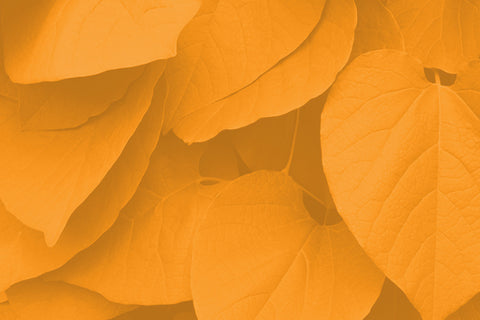
Across the world, anxiety levels have skyrocketed and prescriptions for xanax, valium, ativan, and other drugs in the benzodiazepine class — the class of drug most commonly prescribed for anxiety — have also correspondingly (and exponentially) grown as well.
The pandemic has absolutely played a huge role in making this an even bigger problem, but “mother’s little helpers” have been around and wreaking havoc since the 1960’s. At least they make for good song material...?
Although they may work initially, benzodiazepines (and other similar drug classes like barbiturates) are not safe drugs. There is a high risk of dependency, tolerance, and stopping them “cold turkey” (abruptly) may kill you.
Many people (unsurprisingly!) are in search of safer alternatives. One potential alternative that is growing in popularity is kava, also known as Piper methysticum. Native to the Pacific Islands, kava has been used for thousands of years for its relaxing and calming effects.
Kava first came to the west in the form of kava bars where patrons were served various drinks with kava in them as an alternative to alcohol (you’ll see why below). It was also used as a short-acting anesthetic because of its well-known mild numbing effect on mucosal surfaces.
Over the last several years, the kava plant has been squeezed, brewed, sliced, diced, and (most recently) Tro-ified into some very novel products. Read on to learn more!
Kava's History
Kava originates in the Pacific Islands. For thousands of years, Pacific Islanders have used it to brew relaxing and calming drinks.
Many ceremonies and gatherings included the use of kava. In Samoa, kava is prepared by a group called the Aumaga. The higher ranks are served first followed by the lower ranks in order. These ceremonies are highly ritualized.
Kava is legal in most countries and often treated as a food or dietary supplement. It has also been used by pharmaceutical and supplement companies.
Kava’s Active Constituents
The active constituents of kava include kavalactones, pyrones, flavonoids, and alkaloids. The kavalactones include kavain, dihydrokavain, methysticin, and dihydromethysticin. Kavain is considered the principal active constituent of kava.
How Kava Works
Kava works primarily by increasing the binding of GABA, the primary inhibitory neurotransmitter of the central nervous system. When there is more GABA bound, the brain fires less and calms more. Kava is unique in that it selectively increases GABA in the limbic (or deep) structures in the brain and not the cerebral cortex, which limits its sedative effects at low doses [7].
Also limiting kava’s sedative effects is its ability to decrease the re-uptake of norepinephrine (noradrenaline) while at the same time reducing the release of most other excitatory neurotransmitters.
Then there’s dopamine. Kava works as a reversible MAO-B inhibitor, which is an enzyme responsible for breaking down dopamine and other neurotransmitters in the brain. And the more dopamine available, the more rewarding an experience will be.
Or got pain? Kava has also been shown to inhibit both COX1 and COX2 enzymes, which in turn reduce the production of prostaglandins, a class of chemicals that promote inflammation, pain, and fever.
Kava has an elimination half-life of around 9 hours. This means that it will take 9 hours for half of the kava you’ve ingested to leave your body.
Kava's Key Benefits
Studies have shown that kava may have several benefits, including:
- Anxiety reduction [1]
- Sleep quality enhancement [4]
- Neuroprotection [5]
- Anti-inflammatory properties [3]
- Possible anti-cancer agent [2]
Kava Dosage
There is a wide variety of ways that you can take kava. It comes in tea, tincture/liquid, capsules, and (of course) in troche form (i.e., Tro-ified!).
Effective kava dosage varies from individual to individual. Most experts advise that the maximum dosage one can take is 250 mg, but dosing also depends on the constituent makeup of the K\kava, especially kavalactone content.
As always, it’s best to start low and gradually increase your dose as needed to achieve the desired effect.
Kava Safety
In many clinical trials, kava has been found to be very safe and effective. The most common side effect is a transient numbness of the mucosal surface in contact with the kava preparation. However, there have been some reported additional side effects with high doses and prolonged use, including:
- Dizziness
- Drowsiness
- Headaches
In the early 2000’s, there were some reports of liver toxicity initially attributed to kava, but after extensive investigation by the WHO and other organizations, “the forms of kava used traditionally by Pacific Islanders and by some aboriginal communities are not believed to be associated with the serious forms of liver damage observed in case reports." This safety also extends to most commercial kava products as long as they are made from the roots of the plant, which is most common [6].
Kava at a higher dose has a similar effect to the feeling of alcohol intoxication. This is a result of increasing GABA in the brain, which is why they should not be used together. Unlike alcohol, however, there is no evidence that kava causes withdrawal, tolerance, or dependence [8].
Kava in our Products
Here at Troscriptions, we’ve taken kava to the next level by including it in Tro Calm, our troche to relieve stress/tension and decrease anxiousness.
Tro Calm is a novel and precise blend of 100 mg kava (30% kavalactones), 2 mg CBG, 10 mg CBD, and 50 mg N-nicotinoyl-GABA.
Kava and N-nicotinoyl-GABA both increase GABA by different mechanisms. CBD and CBG work on the endocannabinoid system to release more bliss chemicals like anandamide, decrease inflammation, and are neuroprotective. Basically we’ve taken kava and enhanced and rounded the effect with additional compounds so that you’ll feel chill and relaxed on demand.
As with all our troches, Tro Calm is precision dose, pharmaceutical grade, and physician formulated. They are also easily titrated. We suggest starting with ¼ to ½ a troche and increasing your dose from there!
References
- Savage, K. M., Stough, C. K., Byrne, G. J., Scholey, A., Bousman, C., Murphy, J., Macdonald, P., Suo, C., Hughes, M., Thomas, S., Teschke, R., Xing, C., & Sarris, J. (2015). Kava for the treatment of generalised anxiety disorder (K-GAD): study protocol for a randomised controlled trial. Trials, 16, 493. https://doi.org/10.1186/s13063-015-0986-5
- Allen MJ, Sabir S, Sharma S. GABA Receptor. [Updated 2021 Feb 17]. In: StatPearls [Internet]. Treasure Island (FL): StatPearls Publishing; 2021 Jan-. Available from: https://www.ncbi.nlm.nih.gov/books/NBK526124/
- Bian, T., Corral, P., Wang, Y., Botello, J., Kingston, R., Daniels, T., Salloum, R. G., Johnston, E., Huo, Z., Lu, J., Liu, A. C., & Xing, C. (2020). Kava as a Clinical Nutrient: Promises and Challenges. Nutrients, 12(10), 3044. https://doi.org/10.3390/nu12103044
- Shinomiya K, Inoue T, Utsu Y, Tokunaga S, Masuoka T, Ohmori A, Kamei C. Effects of kava-kava extract on the sleep-wake cycle in sleep-disturbed rats. Psychopharmacology (Berl). 2005 Jul;180(3):564-9. doi: 10.1007/s00213-005-2196-4. Epub 2005 Feb 8. PMID: 15700178.
- Tzeng, Y. M., & Lee, M. J. (2015). Neuroprotective properties of kavalactones. Neural regeneration research, 10(6), 875–877. https://doi.org/10.4103/1673-5374.158335
- Assessment of the Risk of Hepatotoxicity with Kava Products. Geneva, Switzerland: World Health Organization, 2007. Print.
- https://www.researchgate.net/publication/11165054_The_Neurobehavioural_Effects_of_Kava
- https://www.researchgate.net/public...y_disorders_An_outpatient_observational_study





Comments (0)
There are no comments for this article. Be the first one to leave a message!